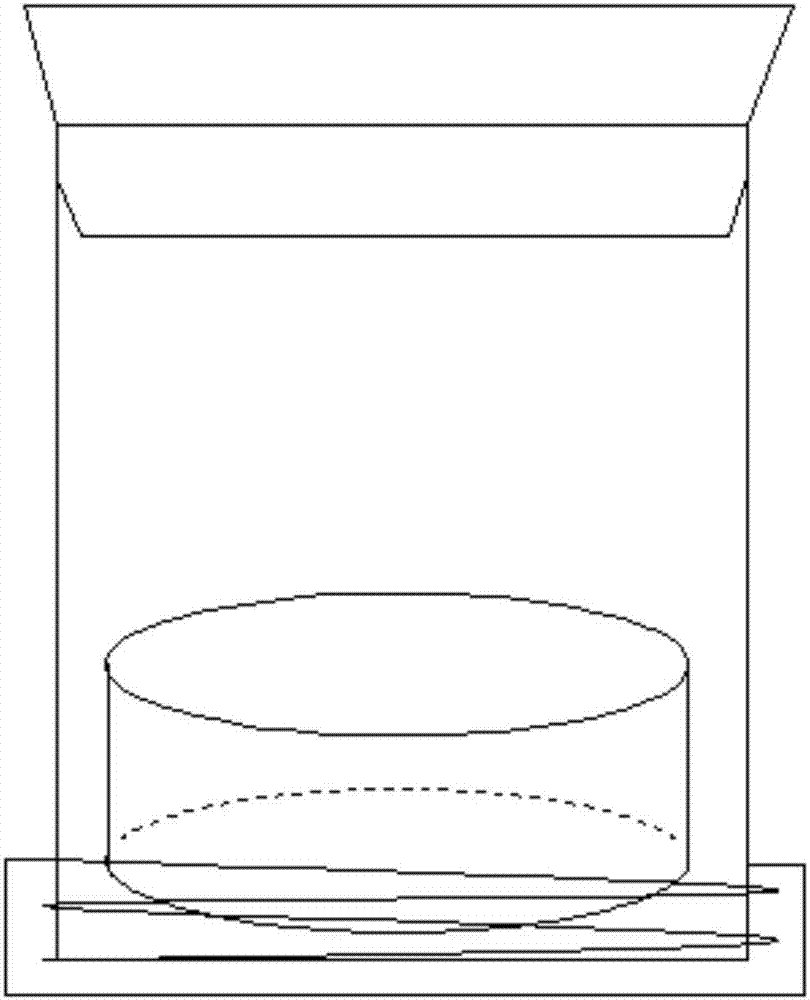Pueraria lobata planting method by using tissue culture seedlings
A planting method and technology of tissue culture seedlings, applied in the planting field of Pueraria mirifica, can solve problems such as unsatisfactory quality of Pueraria mirifica, inability to maintain properties of Pueraria mirifica, uneven quality of itself, etc., achieve good economic and ecological benefits, be easy to popularize, The effect of improving the germination rate
- Summary
- Abstract
- Description
- Claims
- Application Information
AI Technical Summary
Problems solved by technology
Method used
Image
Examples
Embodiment 1
[0037] The invention provides a method for planting kudzu mirifica using tissue culture seedlings, comprising the following steps:
[0038] Step 1. Select a sandy loam field with deep soil layer, loose and fertile soil as the planting field, apply soil disinfectant, and after 5 to 7 days of soil disinfection, plow the land until the soil is soft and free of sticky lumps, add humus soil, and adjust The pH is 5.5-7.5.
[0039] Step 2. In the greenhouse, bury the strong kudzu root in the growth substrate, water it thoroughly, and spray the nutrient solution once every 3 days until new tender stems grow, wherein the growth substrate includes the following raw materials in parts by weight: river sand 70 ~80 parts, 15-20 parts of perlite, 10-15 parts of urea-formaldehyde foam, 12-16 parts of porous ceramsite, 8-12 parts of biochemical fulvic acid; the nutrient solution includes the following raw materials in parts by weight: 35-45 parts of plant peat , 15-20 parts of wheat bran, 4-...
Embodiment 2
[0058] The invention provides a method for planting kudzu mirifica using tissue culture seedlings, comprising the following steps:
[0059] Step 1. Select a sandy loam field with deep soil layer, loose and fertile soil as the planting field, apply soil disinfectant, and after 5 to 7 days of soil disinfection, plow the land until the soil is soft and free of sticky lumps, add humus soil, and adjust The pH is 5.5-7.5.
[0060] Step 2. In the greenhouse, bury the strong kudzu root in the growth substrate, water it thoroughly, and spray the nutrient solution once every 3 days until new tender stems grow, wherein the growth substrate includes the following raw materials in parts by weight: river sand 70 ~80 parts, 15-20 parts of perlite, 10-15 parts of urea-formaldehyde foam, 12-16 parts of porous ceramsite, 8-12 parts of biochemical fulvic acid; the nutrient solution includes the following raw materials in parts by weight: 35-45 parts of plant peat , 15-20 parts of wheat bran, 4-...
Embodiment 3
[0079] The invention provides a method for planting kudzu mirifica using tissue culture seedlings, comprising the following steps:
[0080] Step 1. Select a sandy loam field with deep soil layer, loose and fertile soil as the planting field, apply soil disinfectant, and after 5 to 7 days of soil disinfection, plow the land until the soil is soft and free of sticky lumps, add humus soil, and adjust The pH is 5.5-7.5.
[0081] Step 2. In the greenhouse, bury the strong kudzu root in the growth substrate, water it thoroughly, and spray the nutrient solution once every 3 days until new tender stems grow, wherein the growth substrate includes the following raw materials in parts by weight: river sand 70 ~80 parts, 15-20 parts of perlite, 10-15 parts of urea-formaldehyde foam, 12-16 parts of porous ceramsite, 8-12 parts of biochemical fulvic acid; the nutrient solution includes the following raw materials in parts by weight: 35-45 parts of plant peat , 15-20 parts of wheat bran, 4-...
PUM
 Login to View More
Login to View More Abstract
Description
Claims
Application Information
 Login to View More
Login to View More - R&D
- Intellectual Property
- Life Sciences
- Materials
- Tech Scout
- Unparalleled Data Quality
- Higher Quality Content
- 60% Fewer Hallucinations
Browse by: Latest US Patents, China's latest patents, Technical Efficacy Thesaurus, Application Domain, Technology Topic, Popular Technical Reports.
© 2025 PatSnap. All rights reserved.Legal|Privacy policy|Modern Slavery Act Transparency Statement|Sitemap|About US| Contact US: help@patsnap.com

